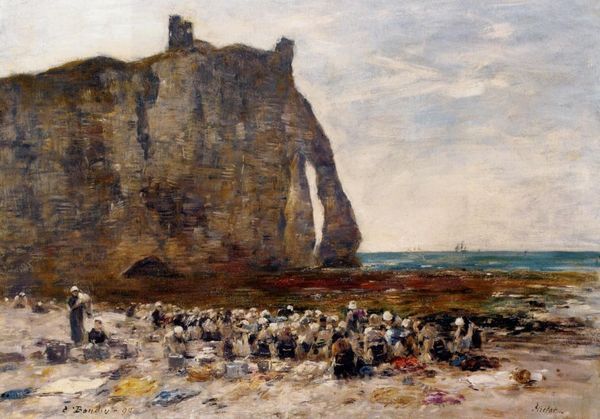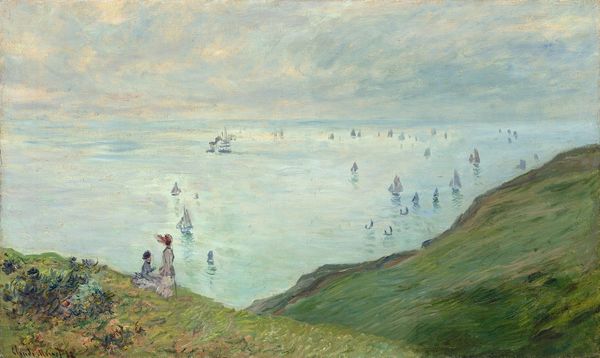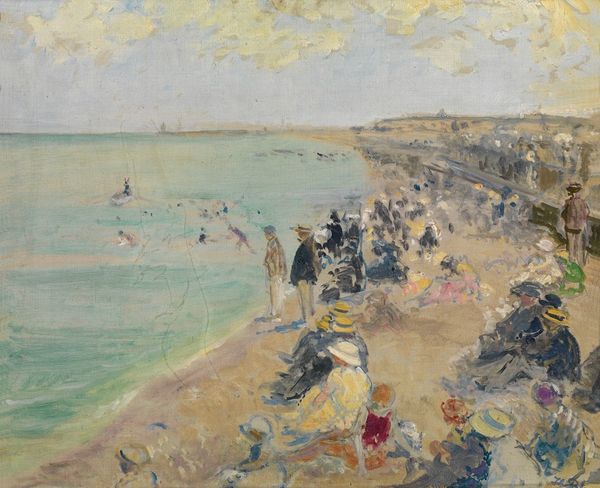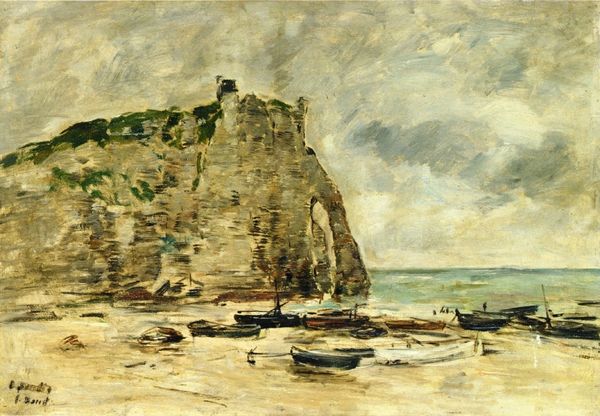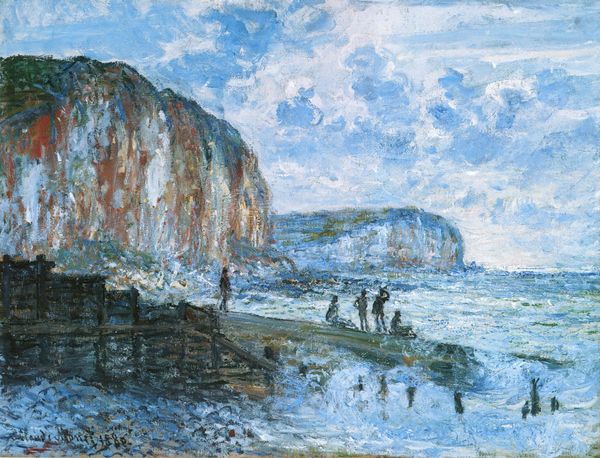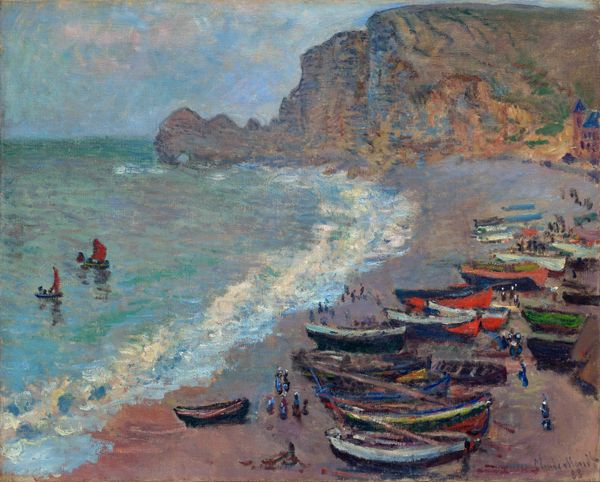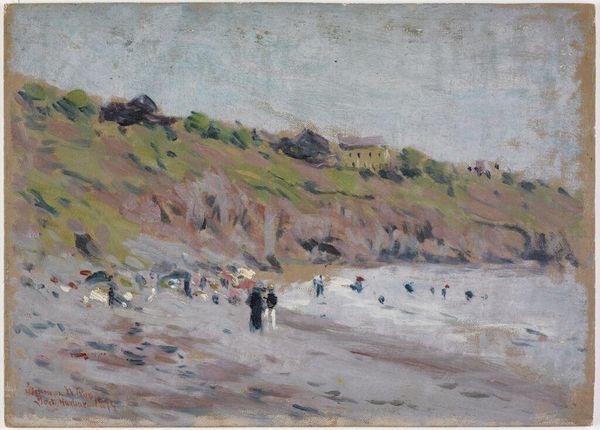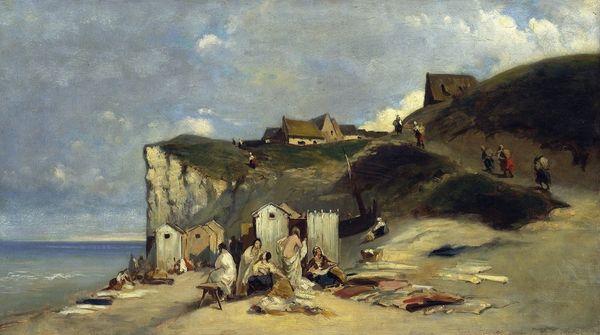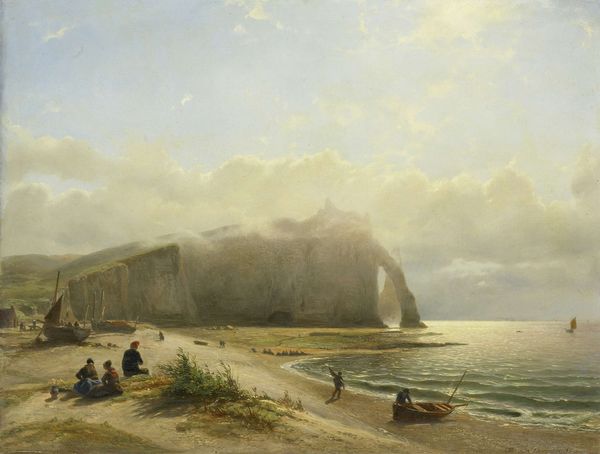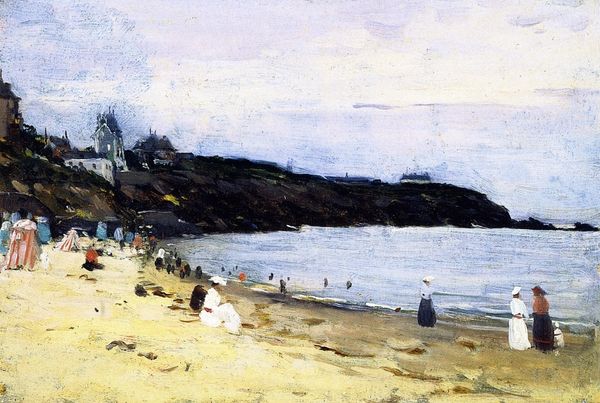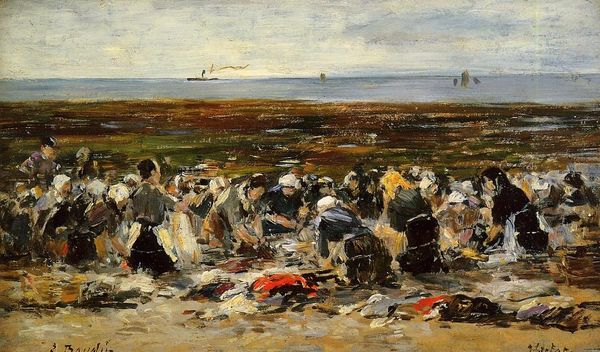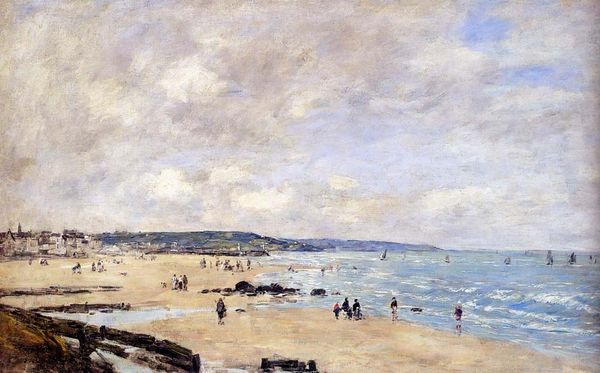
Copyright: Public Domain: Artvee
Eugène Boudin painted Washerwomen on the Beach of Etretat in France in 1869, using oil on canvas. What strikes me most about this image is how it presents the harsh realities of working-class life within what might appear, at first glance, as a pleasant seaside scene. Boudin presents a crowd of women engaged in the backbreaking labour of washing clothes. The cliffs of Étretat, now a tourist destination, loom in the background, but the painting foregrounds the working women. Boudin was painting during a period of rapid social and economic change. Etretat, like many coastal areas, was experiencing a boom in tourism, but this painting reminds us of the economic disparities of the time. What kind of social institutions existed to support these women? The art market, as it was emerging in France, participated in the creation of such images, and in its own way, gave value to the hard labor portrayed. The social and institutional context in which art is made and consumed shapes its meaning. As art historians, it’s our job to uncover these complex relationships.
Comments
No comments
Be the first to comment and join the conversation on the ultimate creative platform.
